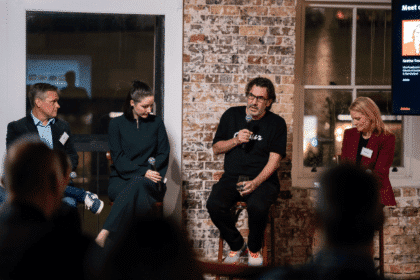Continuously challenging orthodoxies to reframe opportunities and using multiple types of innovation are the keys for incumbent companies trying to manage a disruptive digital landscape, according to Deloitte Tech and media partner Damien Tampling.
Speaking at Daze of Disruption, earlier this week, Tampling told delegates that to understand disruption you needed to look at the the science behind the art that is innovation, and what it means to be truly transformational.
Tampling said there are three broad categories of innovation: core innovation, adjacent innovation, and transformational or disruptive innovation. It is transformational innovation where “developing breakthroughs and influencing things for markets that don’t exist yet” occur.
Tampling used Apple products to illustrate an example of each innovation category, describing the iPhone 6 as core innovation, the Apple watch as adjacent innovation, and iTunes as transformational innovation.
“The term digital disruption finds its home in the third category – transformational or disruptive innovation,” he said.
“What typically categorises transformational or disruptive is a product or service that helps makes something more available or accessible to a larger audience.”
Tampling said transformational innovation has the tendency to destroy incumbents in an industry quickly. It is also the most difficult innovation to implement as an incumbent because of existing structures, capabilities, and culture, within an organisation, which oftentimes requires it to pursue a strategy to destroy the thing that has made it profitable today.
Digital companies, products and services lend themselves well to disruptive innovation because these businesses “solve a real problem and are able to leverage the ‘network effect’ of the web”.
According to Tampling, it’s urgent and vital companies seek to get in front of disruption, but too many companies were not framing their issue globally and, almost always, local companies are going to get disrupted by something that is operating globally. So people had to “think global”, he said.
Tampling’s work at Deloitte brings together a lot of the best frameworks and thinking in the world. Key parts of his talk and his deck will be available next week on the B&T, Which50 and the Daze of Disruption Site, with the rest of the conference. Tamplings talk rated as one of the top three in the DAZE conference.
The DAZE producers said that the conference had been a huge success and attracted massive ongoing interest. “We’ve had overwhelming feedback to continue with the premise of the conference, which is putting disruptors and incumbents in a room together so they collaborate more and get Australia more competitive,” said Jeremy Knibbs, one of the producers of DAZE.
Daze of Disruption has been announced for the Melbourne Town Hall on November 26.








